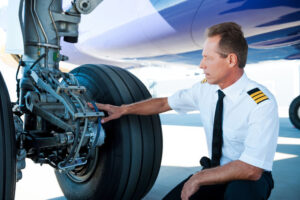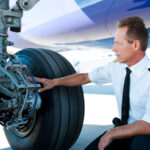Mitigating the Effects of Climate Change on Air Travel
In the professional pilot industry, understanding and staying up to date on the effects of climate change on aviation is something we take seriously. From increased fuel costs to changes in global air traffic control systems, the impacts of climate change are far-reaching and cannot be ignored.
The most obvious impact of climate change on aviation is increased fuel consumption as temperatures rise, causing air density levels to decrease. This means that airlines must burn more fuel to reach cruising altitude, leading to significantly higher costs at a time when the industry is already facing financial difficulties. In addition, higher fuel prices can also lead to increased ticket prices for passengers, making air travel less accessible to many people.
The Impact of Climate Change on Aviation
It’s clear that climate change has a significant impact on the aviation industry. To help mitigate its effects and ensure safe, reliable air travel for everyone, it is important that both airlines and governments take steps to reduce their carbon emissions.
Governments can do this by implementing carbon taxes or cap-and-trade programs which incentivize companies to reduce their emissions and invest in renewable energy technologies. Airlines can also play their part by investing in more efficient aircraft, using biofuels, and switching to cleaner sources of electricity for ground operations.
Airline Actions
In addition, airlines should strive to become as fuel efficient as possible by making use of advances in technology such as digital flight planning systems, onboard turbulence detection systems, and advanced data analytics tools which help optimize performance across all areas of air travel. These practices can help reduce fuel consumption and costs, while also making flights safer and more efficient.
Environmental Challenges Faced by Airlines:
- Carbon Emissions: Aviation is responsible for approximately 2% of global carbon dioxide emissions.
- Air Pollution: Due to the burning of fossil fuels, air travel also contributes to air pollution primarily near airports and other flight routes.
- Noise Pollution: Aircraft noise is a significant environmental challenge faced by airlines.
Strategies for Airlines to Reduce their Carbon Footprint:
- Fuel Efficiency: Reduce carbon emissions by implementing fuel-efficient measures such as optimizing the use of the latest technology in engines, choosing more efficient aircraft, and reducing fuel consumption during taxiing.
- Eco-friendly Practices: Adopt eco-friendly practices within airlines operations such as recycling on board, reducing single-use plastics, and tree-planting initiatives.
- Promote Green Fuels: Encourage the use of sustainable aviation fuels which are made from non-food crops.
- Optimize Flight Paths: Identify and adopt optimal path planning to reduce fuel consumption and minimize emissions
- Improved Aircraft Design: Incorporate the use of lightweight materials into newer aircraft design to improve fuel efficiency and reduce carbon emissions.
- Incentivize Customers: Offer incentives to customers who choose airlines with more environmentally responsible practices.
Regulations and Best Practices:
- Regulations: Abide by local, regional and international laws and regulations protecting the environment in the aviation sector.
- Educate & Train Personnel: Train personnel such as pilots, flight attendants, engineers and ground staff on environmental best practices.
- Carbon Offsetting: Encourage carbon offsetting which involves investing in projects that reduce carbon emissions as an alternative measure to carbon reduction.
Conclusion
It’s clear that climate change has a major impact on the aviation industry and must be addressed to ensure safe and efficient air travel for everyone. Fortunately, by taking steps to reduce their carbon emissions, both airlines and governments can play a role in mitigating these effects. By investing in more fuel-efficient aircraft, switching to cleaner sources of electricity, and offsetting emissions through the purchase of carbon credits or investment in renewable energy sources, we can create a sustainable future for our skies.










